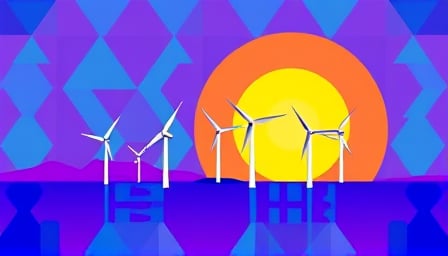Orsted AS: Navigating Challenges and Opportunities in the Renewable Energy Sector
In a dynamic week for Orsted A/S, the Danish renewable energy giant has faced significant challenges in the United States, while simultaneously receiving a positive reassessment from analysts. As the company continues to expand its global footprint in offshore wind, bioenergy, and customer solutions, these developments underscore the complex landscape of the renewable energy sector.
US Offshore Wind Challenges
Orsted’s US operations have encountered substantial hurdles following decisions by the Trump administration to halt construction on key wind projects. The administration’s actions, driven by a longstanding skepticism towards wind energy, have directly impacted Orsted’s Revolution Wind project. The Bureau of Ocean Energy Management (BOEM) ordered a stop to activities, citing regulatory concerns. This decision has raised alarms about grid reliability in New England, with the local grid operator warning that the halt could undermine the power supply, threaten the regional economy, and increase consumer costs.
The repercussions of these developments were immediately felt in the financial markets. Orsted’s shares experienced a sharp decline, reaching a record low, as investors reacted to the uncertainty surrounding the company’s US projects. The halt has also cast a shadow over Orsted’s planned $9.4 billion share sale, prompting executives to seek ways to reassure shareholders about the viability of this capital-raising effort.
Positive Analyst Reassessment
Despite these challenges, Orsted received a notable endorsement from Berenberg, which upgraded the company’s stock rating to “Buy.” The investment bank adjusted its target price to 225 Danish kroner from 250, reflecting confidence in Orsted’s long-term prospects. This upgrade suggests that analysts see the company’s diversified portfolio and global presence as strengths that can help it navigate current obstacles.
Strategic Moves and Global Expansion
In response to the US challenges, Orsted has continued to pursue strategic initiatives to bolster its position in the renewable energy market. The company recently sold a majority stake in a floating wind project in Scotland, demonstrating its commitment to expanding its offshore wind capabilities in Europe. Additionally, Orsted’s collaboration with Odfjell Oceanwind in the Salamander project highlights its ongoing efforts to innovate and lead in the development of floating wind technology.
Looking Ahead
As Orsted navigates the immediate challenges posed by the US project halts, its diversified operations across offshore wind, onshore wind, bioenergy, and customer solutions provide a solid foundation for resilience. The company’s active engagement in research, such as its agreement with the University of Oxford to optimize offshore wind turbine foundations, underscores its commitment to innovation and sustainability.
In the face of regulatory and political headwinds, Orsted’s strategic focus on global expansion and technological advancement positions it well to capitalize on the growing demand for renewable energy. With a strong market capitalization and a robust earnings ratio, Orsted remains a key player in the transition towards a more sustainable energy future.
As the situation evolves, stakeholders will be closely watching Orsted’s ability to adapt and thrive in an increasingly complex and competitive landscape. The company’s response to these challenges will be critical in shaping its trajectory in the years to come.
